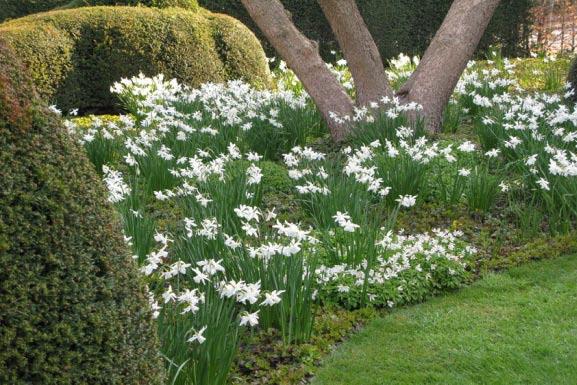
3 minute read
TIPStricks
Move Your Virtual Workplace Outdoors
Tired of those fuzzy video conference call backgrounds and working indoors? Maybe it’s time to move your office outside to your backyard. “I have an outdoor office and enjoy working outside every day with my dog, Mutt Mulligan, nearby,” said Kris Kiser, president and CEO of the TurfMutt Foundation, an environmental education and stewardship program that encourages outdoor living and caring for green spaces. With the COVID-19 pandemic still keeping more Americans working at home, Kiser points out that outdoor offices offer a way to de-stress and enjoy nature while focusing on tasks at hand. It also jazzes up those videoconference call backgrounds. The TurfMutt Foundation offers the following tips to help you keep your home outdoor office operational from fall into the winter months. • Beef up Wi-Fi and make sure electrical outlets are reachable so your Wi-Fi signal strength is up to the task of outdoor videoconference calls or online work. Run outdoor-rated power cords or install additional outdoor power outlets. • Check your videoconference call background “look.” Use your computer camera to check your videoconference call background before you are finished setting up. Adjust your seating location and look for the best effect. • Add portable heaters or a fire pit. Outdoor heaters or hydronic or electric radiant heat systems can extend your stay in your outdoor office. • Build a patio cover. A semi-enclosed space, such as a pergola, awning, gazebo, or pavilion can protect you—and your laptop—from the elements. • Warm up the space with lights. Lights make an outdoor space more inviting for a work session. When it gets darker earlier in the winter, lighting can help extend your day. Some light sets are even equipped with outlets, allowing you to charge your laptop. • Add speakers or use headphones while your work along to a little music. Headphones can tune out neighborhood noise and help with focus. Just remember to cancel the music during Zoom meetings o improve the properties of their soil for gardening,” Evanylo said. According to Evanylo, compost is useful for improving soil health, boosting beneficial microbial populations, recycling nutrients, and increasing organic matter in the soil. Composting is also good for the environment. Organic wastes in landfills get converted to methane, a potent greenhouse gas that contributes to climate change. When food scraps are recycled into a compost pile, it keeps waste out of a landfill. Here are some compost dos and don’ts. DO • Have a 2:1 brown to green ratio; for example, two parts dry leaves (brown) to one part food waste (green). • Have an average particle size distribution—some large pieces, some small, but mostly in the middle. • Monitor your moisture levels! Water the compost as needed, but not too often or too much—do a squeeze test to check. • Bury food waste and keep covered with browns to help avoid insect and rodent problems. DON’T • Compost treated wood or chemicals (paint, pressure treatment, etc.). • Inoculate your compost. Microbes exist naturally. • Compost meats, dairy, or pet waste. • Compost any diseased plants if the pile is less than 130–150 degrees. o
Composting Tips
By Devon Johnson
Composting is a great way to use up household food waste as well as boost garden productivity. Unfortunately, many gardeners make composting mistakes that can lead to problems, such as compost that fails to decompose or attracts rodents. Greg Evanylo, Virginia Cooperative Extension specialist and professor in the School of Plant and Environmental Sciences, recommends that home gardeners implement these compost best practices. • Make sure the compost pile is big. If space is an issue, decrease the pile surface area by creating a compost bin. The bigger your pile, the more heat it will generate. The average pile size should be a minimum of 1 cubic yard. • Make sure to turn your pile to get oxygen into it. Without enough oxygen, the microbes will starve, and the pile will go anaerobic. This isn’t good. Turning also ensures that all the waste breaks down evenly. • Make sure to monitor moisture levels. To do this, perform a squeeze test: Scoop a handful of your compost and squeeze. Does it leak any water? If so, the compost is too wet. When no water comes out but it sticks together, the moisture level is perfect. “What gardeners are ultimately trying to achieve with composting is the development of a soil amendment that will










